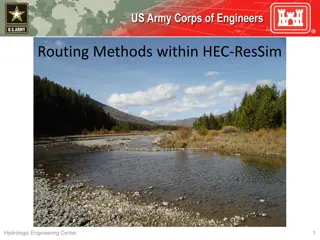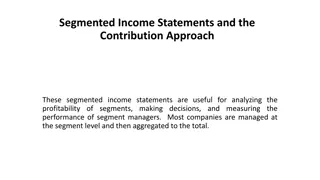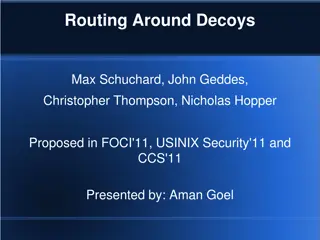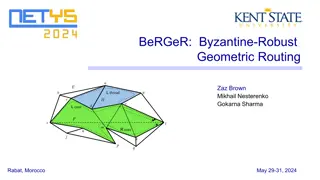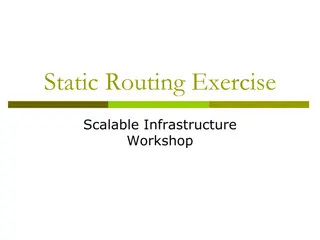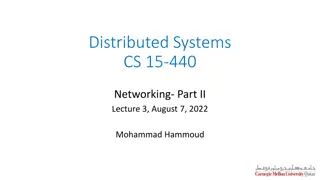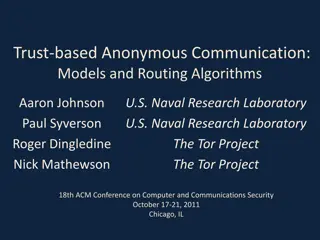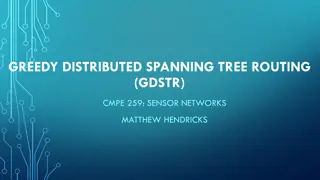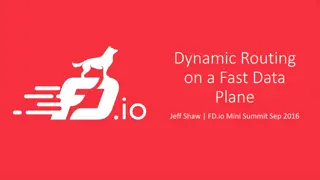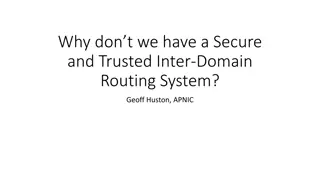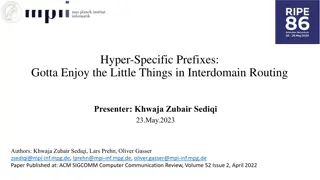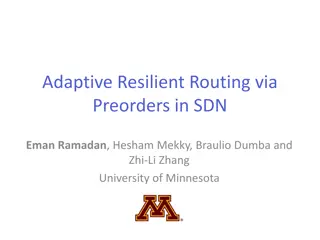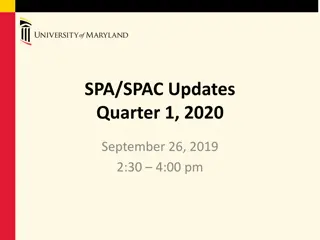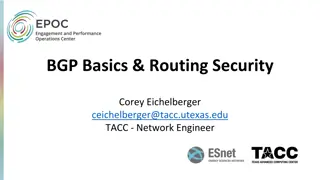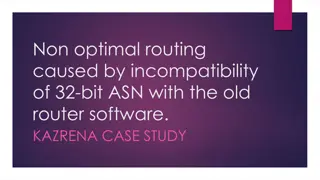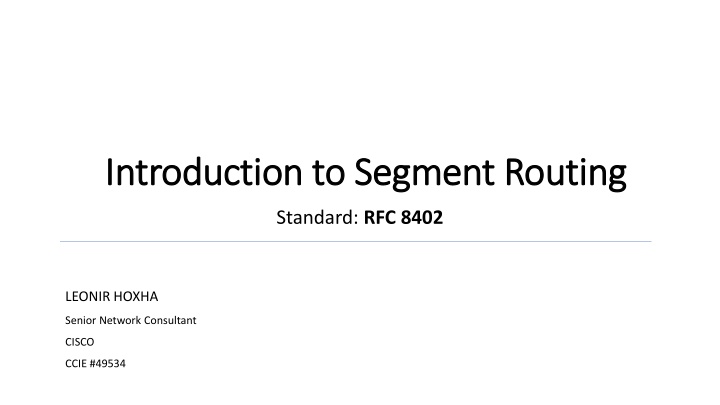
Introduction to Segment Routing Standard Overview
"Explore the fundamentals of Segment Routing Standard as outlined in RFC 8402 by Cisco's Senior Network Consultant, Leonir Hoxha. Learn about the challenges, building blocks, traffic engineering, and service creation in network transport evolution with Segment Routing."
Download Presentation

Please find below an Image/Link to download the presentation.
The content on the website is provided AS IS for your information and personal use only. It may not be sold, licensed, or shared on other websites without obtaining consent from the author. If you encounter any issues during the download, it is possible that the publisher has removed the file from their server.
You are allowed to download the files provided on this website for personal or commercial use, subject to the condition that they are used lawfully. All files are the property of their respective owners.
The content on the website is provided AS IS for your information and personal use only. It may not be sold, licensed, or shared on other websites without obtaining consent from the author.
E N D
Presentation Transcript
Introduction to Segment Routing Introduction to Segment Routing Standard: RFC 8402 LEONIR HOXHA Senior Network Consultant CISCO CCIE #49534
Agenda Todays Challenges Segment Routing overview & building blocks Prefix SID Adjacency SID Topology Independent LFA (aka: Ti-LFA) Segment Routing Traffic Engineering PCE Controller Use Cases FlexAlgo, SDWAN over SR, Disjointness with SR-PCE, and Inter-AS with BGP Peering SID
Service Creation Challenges Complex End-to-End service provisioning: - Service stitching - Manual Operations - Heterogeneous Underlay and Overlay networks
Unified Fabric for Service Creation Unified underlay and overlay networks with Segment Routing and EVPN E2E cross-domain automation with model-driven programmability and streaming telemetry
Network Transport Evolution Unified MPLS SR Enabled Transport BGP-EVPN IGP/SR IP
Segment Routing overview and Segment Routing overview and Building Blocks Building Blocks
Segment Routing The source chooses a path and encodes it in the packet header as an ordered list of segments Segment: is an identifier for any type of instruction I.e. Go to Node N using the shortest path
Segment Routing Forwarding & Control Plane MPLS: an ordered list of segments is represented as a stack of labels IPv6: an ordered list of segments is encoded in a routing extension header IGP distributes following Segment ID s (SID) Prefix Segment (Node SID or Anycast SID) Adjacency Segment 16002 B 16001 A 16003 C
Segment Routing Prefix Segment ID 16005 1.1.1.5/32 Shortest-path to the IGP prefix 1 2 16005 16005 Equal Cost MultiPath (ECMP)-aware 16005 5 16005 Global Segment (global significance) 16005 3 4 Label: 16000 24000 (default SRGB) 16004 16005 Statically assigned 1 2 All nodes use default SRGB 16,000 23,999 Distributed by ISIS/OSPF 16004 16004 5 16004 16004 16004 3 4 1.1.1.4/32 16004
Segment Routing Adjacency Segment ID Forward to IGP adjacent Node 1 2 Local Segment (local significance) Advertised as label value 5 Adj to 2 Dynamically assigned 24042 Distributed by ISIS/OSPF Adj to 5 3 4 24045 24043 Adj to 3
Segment Routing Combined SIDs 16004 Steer traffic on any path through the 24045 Packet to 5 network 1 2 Path is specified by a stack of labels No path is signaled 5 No per-flow state is created 24045 Packet to 5 Single protocol: IS-IS or OSPF 3 4 16004 24045
Topology Independent LFA (Ti Topology Independent LFA (Ti- -LFA) LFA)
Topology Independent LFA (Ti-LFA) 100%-coverage 50-msec link and node protection Simple to operate and understand automatically computed by the IGP Prevents transient congestion and suboptimal routing leverages the post-convergence path, planned to carry the traffic
Topology Independent LFA (Ti-LFA) TI-LFA for link R1R2 on R1 A Z Calculate P and Q spaces Packet to Z Packet to Z R2 R1 Calculate post-convergence SPT prefix-SID(R4) Find Q and adjacent P node on post- adj-SID(R4-R3) R5 prefix-SID(Z) prefix-SID(Z) convergence SPT Packet to Z Packet to Z R1 will push the prefix-SID of R4 and R4 R4 R3 R3 1000 P-space Q-space the adj-SID of R4-R3 link on the adj-SID(R4-R3) Default metric: 10 prefix-SID(Z) backup path Packet to Z
Segment Routing Traffic Engineering Segment Routing Traffic Engineering
Traditional MPLS/RSVP-TE Link information Distribution ISIS-TE OSPF-TE Path Calculation Path Setup Forwarding Traffic down path Auto-route Static route PBR Forwarding Adjacency Pseudowire Tunnel select Head end IP/MPLS Mid-point Tail end TE LSP
Segment Routing Traffic Engineering Binding Segment is a fundamental building block of SRTE The Binding Segment is a local segment Has local significance A Binding-Segment ID identifies a SRTE Policy Each SRTE Policy has one Binding-SID associated Packet received with Binding-SID as top label is steered into the SRTE Policy associated with the Binding-SID Binding-SID label is popped, SRTE Policy s SID list is pushed Binding SID can be automatically assigned or statically configured as part of the SRTE policy
SR-PCE Controller PCE maintains topology and path database SR SR- -PCE PCE (established paths) LSP DB Application Application PCE specifies path as list of segment ids Path Request PCC forwards traffic by pushing segment id list on TED packets PCEP No path signaling required Segment List: 10,20,30 Minimal forwarding state PCC The state is no longer in the network but in the packet Enables centralized path initiation and update control
Feeding SR-PCE with LSP-DB SR SR- -PCE PCE An external PCE requires some form of topology acquisition. TED A PCE may learn topology using BGP-LS, IGP. BGP-LS characteristics BGP-LS aggregates topology across one or more domains Domain 0 RR provides familiar operational model New BGP-LS attribute TLVs for SR BGP-LS BGP-LS IGP: links, nodes, prefixes BGP: peer node, peer adjacency, peer set Domain 1 Domain 2
Some Use Cases with SR: Some Use Cases with SR: - Flexible Algorithm (FlexAlgo) - SD-WAN over Segment Routing - Disjointness with SR-PCE - Inter AS with SR-PCE
Multi-Plane Network with FlexAlgo 1 2 Loopback 1.1.1.9/32 16009 Algo 0 16809 Flex-Algo 128 16909 Flex-Algo 129 4 3 0 9 6 5 7 8 All the nodes support Algo 0: minimize IGP metric Green nodes also support 128: minimize IGP metric Red nodes also support 129: minimize Delay
Multi-Plane Network with FlexAlgo 1 2 4 3 0 Loopback 1.1.1.9/32 16009 Algo 0 16809 Flex-Algo 128 16909 Flex-Algo 129 9 6 5 16009 7 8 Payload Path to Node 9 across Algo 0
Multi-Plane Network with FlexAlgo 1 2 4 3 0 Loopback 1.1.1.9/32 16009 Algo 0 16809 Flex-Algo 128 16909 Flex-Algo 129 9 6 5 16809 7 8 Payload Path to Node 9 across Flex-Algo 128
Multi-Plane Network with FlexAlgo 1 2 4 3 0 Loopback 1.1.1.9/32 16009 Algo 0 16809 Flex-Algo 128 16909 Flex-Algo 129 9 6 5 16909 7 8 Payload Path to Node 9 across Flex-Algo 129
SD-WAN over Segment Routing SDWAN and SR integration enables a service provider to offer underlay transport SLAs for Software-Defined WAN (SDWAN) customers The customer marks the packets with their desired QoS and transport treatment The service provider leverages Per-Flow SR Policy to provide the underlay transport SLAs according to the customer s marking Delay Sensitive traffic Secure and Encrypted traffic forwarding (MACsec enabled end-to-end path) Etc..
Disjointness with SR-PCE PCE 3 1 2 SID-list: {30102, 30203} I:100 I:100 7 4 5 8 6 7 SID-list: {16007, 16008} I:100 I:100 Default IGP link metric: I:10 Two dynamic paths between two different pairs (head-end, tail-end) must be disjoint from each other
Inter-AS with SR-PCE & BGP Peering SID AS1 AS6 30024 2 4 6.1.1.6/32 30024 18006 18006 1 10 11 6 pkt pkt 16002 pkt 3 5 30024 18006 pkt Pop and Forward to the BGP peer BGP Peering SID like an adjacency SID external to the IGP Dynamically allocated but persistent
Conclusion Strong customer adoption De-facto SDN Architecture IETF Standardization (RFC 8402) Multi-vendor Consensus
Thank You Thank You


